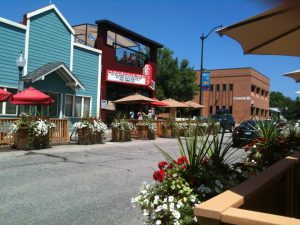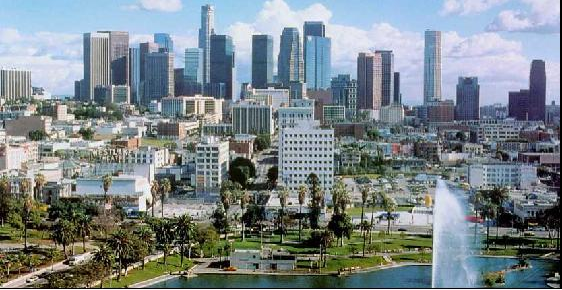The following is the first in our series focusing on providing information on the various types of office space available, from business parks to hot desking, conventional office accommodation to shared coworking options.
Business centers and business parks are locations with several businesses grouped together, like a shopping center, but for commercial and office based businesses. The typical business park is a development of land and buildings set aside exclusively for the use of offices of all sizes and designs.
Business Parks in the Suburbs
Business parks are found in cities, but are more frequently located in suburban areas. Developers build a variety of sizes and designs of office spaces in one location. Available spaces will vary from a single occupancy 400 square foot office space to a 50,000 square foot warehouse space, all on one site. Occasionally, within the business park, you’ll find a larger building with several offices these are frequently owned or managed by a single entity. Owners of the larger building typically rent the spaces to small businesses as conventional, serviced, or virtual offices.
A business park is in stark contrast with the big city high rise type business locations. Business parks are often designed to resemble a university campus or suburban neighborhood. There are one or two story buildings, instead of twenty story skyscrapers; there are green spaces; there may be fountains or park benches in the surrounding areas. These business parks are ideal locations for service or retail based businesses that need a location for customers to visit.
Some business parks become so large and welcoming to businesses that they begin to resemble a small town. As the success of businesses located at a specific park grows, more and more businesses choose to locate there. From that point it may seem inevitable that neighborhoods and communities begin to sprout up in the area.
The Appeal of Business Parks
For many companies, cost effectiveness proves to be the drawing feature to a business park space. The spaces are usually more affordable than commercial or retail spaces in other locations. Often a group of similarly based businesses, such as medical specialists, will locate in a business park creating a network of services that appeal to consumers.
Typically, the companies located in a business park will be diverse, varying from service based industries, such as computer repair, for example, to investment firms that are closed to the public. The diversity of the business park is limited only by the amenities offered by the developers. Business parks can help create a concentrated, affordable non-industrial office district and contribute to the communities in which they are constructed.
For information on business centre and office accommodation opportunities across the US click here.
 Louisville is a mid-sized urban center in Boulder County with a population of approximately 20,000 people. The city has a central location within Colorado and is within easy reach of other major cities, with Denver only a 30-minute drive away and Boulder just 10 minutes to the west.
Louisville is a mid-sized urban center in Boulder County with a population of approximately 20,000 people. The city has a central location within Colorado and is within easy reach of other major cities, with Denver only a 30-minute drive away and Boulder just 10 minutes to the west. Los Angeles CBD is a thriving commercial hub comprised of 15 districts: Skid Row, Civic Center, Little Tokyo, Old Bank, South Park, Historic Core, Gallery Row, Fashion District, Arts District, Warehouse District, Jewelry District, Industrial District, and Toy District. Bunker Hill and the Financial District are also part of downtown Los Angeles and are considered the city’s business core area.
Los Angeles CBD is a thriving commercial hub comprised of 15 districts: Skid Row, Civic Center, Little Tokyo, Old Bank, South Park, Historic Core, Gallery Row, Fashion District, Arts District, Warehouse District, Jewelry District, Industrial District, and Toy District. Bunker Hill and the Financial District are also part of downtown Los Angeles and are considered the city’s business core area. An Overview of Chicago’s Central Business District
An Overview of Chicago’s Central Business District